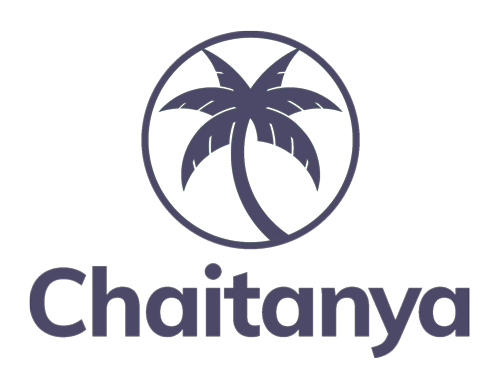November 01, 2023
Introduction
The concept of microfinance came into existence in 1974 in India. SEWA (Self Employed Women’s Association) bank was established in Ahmedabad, it was one of the first microfinance institutions established in India. Microfinance companies are financial organizations that are focused on providing loans to a specific category of people whose income is below 1 lakh. Microfinance institutions, take risks for better returns and provide loans without any collateral for poor people. In recent years, the microfinance ecosystem in India has witnessed significant developments aimed at enhancing financial inclusion, reducing poverty, and increasing economic growth.
Recent Developments In Microfinance
In May 2020, nearly 98% of the accounts held by the lender were placed under loan moratorium. This was due to the liquidity framework of the Microfinance Industry, which primarily relies on regular cash flows. Nevertheless, by 2021, the India MFI has managed to provide its services to cater to the financial needs of 60 million customers across 28 states, despite the ongoing crisis. Recent developments in the microfinance industry are as follows:
Policy reforms
One of the main causes that sped up the recent improvements in India’s microfinance industry has been the policy reforms brought by the RBI. The Reserve Bank of India has played a crucial role in regulating and strengthening the microfinance industry. In 2019, the RBI finally raised the cap on lending rates for microfinance institutions by providing them with greater flexibility in setting their own interest rates. This move made microfinance more viable for MFIs while offering loans at affordable rates for the borrowers.
Data analytics and credit scoring
Data analytics and credit scoring have helped microfinance institutions in assessing the creditworthiness and risk management of the borrower. This approach helps financial institutions in making decisions while processing the loans. The use of alternative data sources, such as mobile phone usage and social media activity, is allowing MFIs to evaluate borrowers who lack traditional credit histories. This creative approach allows MFIs to finance for those who were previously considered too risky to lend.
Microfinance for women
Numerous initiatives have been launched by both governments and the private sector to empower women through microfinance. One of the first established microfinance institutions SEWA (Self Employed Women’s Association) has provided women with the means to start and grow their own small businesses. Additionally, many women’s self-help groups have emerged offering financial support and training to female entrepreneurs across the country.
Green microfinance
Green microfinance has emerged as a combat trend with growing environmental concerns. Microfinance institutions these days are increasingly promoting environmentally sustainable practices and supporting businesses that are eco-friendly. These initiatives help businesses by providing necessary loans to help them fight climate change.
Impact investing
Impact investing has been a key focus in recent developments. Investors are increasingly interested in the microfinance sector, seeing it as an avenue to generate both financial returns and social impact. This is enabling microfinance institutions to scale their operations and reach more underserved communities where banking is just a dream.
Enhanced customer education
With digitalization, everyone now has access to the web which allows them to learn things that were hard in the old times. That is why customer education has been a key focus in recent years. Ensuring that the borrowers understand the terms and responsibilities of their loans is critical, many microfinance companies started conducting financial literacy programs and offering training to help borrowers manage their finances effectively, reducing the risk of indebtedness.
Digital financial inclusion
In the year 2024, it is anticipated that digital financial inclusion will witness an upsurge in the growth of digital services offered by microfinance institutions. Mobile banking, digital lending, and contactless payment systems will emerge as vital tools for extending services to clients residing in remote areas.
Regulatory reforms
In recent years, regulatory reforms have been a significant driving force in shaping the microfinance sector. Governments and regulatory bodies have been working hand in hand to create a supportive environment that fosters the growth and sustainability of microfinance institutions. Through these collaborations, regulatory bodies have been able to set clear guidelines and standards, develop licensing and supervision frameworks, and establish reporting and disclosure requirements.
Microfinance development ways over the years
- Digital transformation: Microfinance institutions have developed technologies for digital transformation, from digital lending to repayment solutions, making services more accessible and convenient.
- Risk management: These institutions have strengthened risk assessment and management to navigate through uncertain times.
- Flexible staffing arrangements: During the Covid19-lockdown, many MFI’s have shut down their branches and reduced staffing in the ongoing branches. Some MFI’s had also started offering work-from-home opportunities to reduce the maintenance of the office.
- Customer support: Covid19-lockdown transformed the way MFI’s work; they adopted customer-centric approaches to provide support to borrowers facing financial difficulties.
- Partnerships: Microfinance institutions have started collaborating with banks, fintech companies, and other NGOs to expand the outreach and improve services.
- Diversification: These institutions started providing new microloan strategies to go beyond traditional microlending and to meet the evolving needs of the customers during/after the lockdown period.
The microfinance industry has evolved drastically in recent years, driven by various factors such as policy reforms, digital transformation, and innovative practices. These developments have helped low-income individuals access financial services and also have contributed to poverty reduction and economic development. With a focus on women’s empowerment, green microfinance, and risk mitigation, the microfinance industry is embracing a holistic approach to financial inclusion.
Chaitanya India Fin Credit Pvt Ltd. is a non-banking financial company with a microfinance industry focus. Our company is committed to providing financial services to women of low income families in rural India. Our aim is to create a significant social impact through our microcredit services, and we are swiftly expanding our operations.


